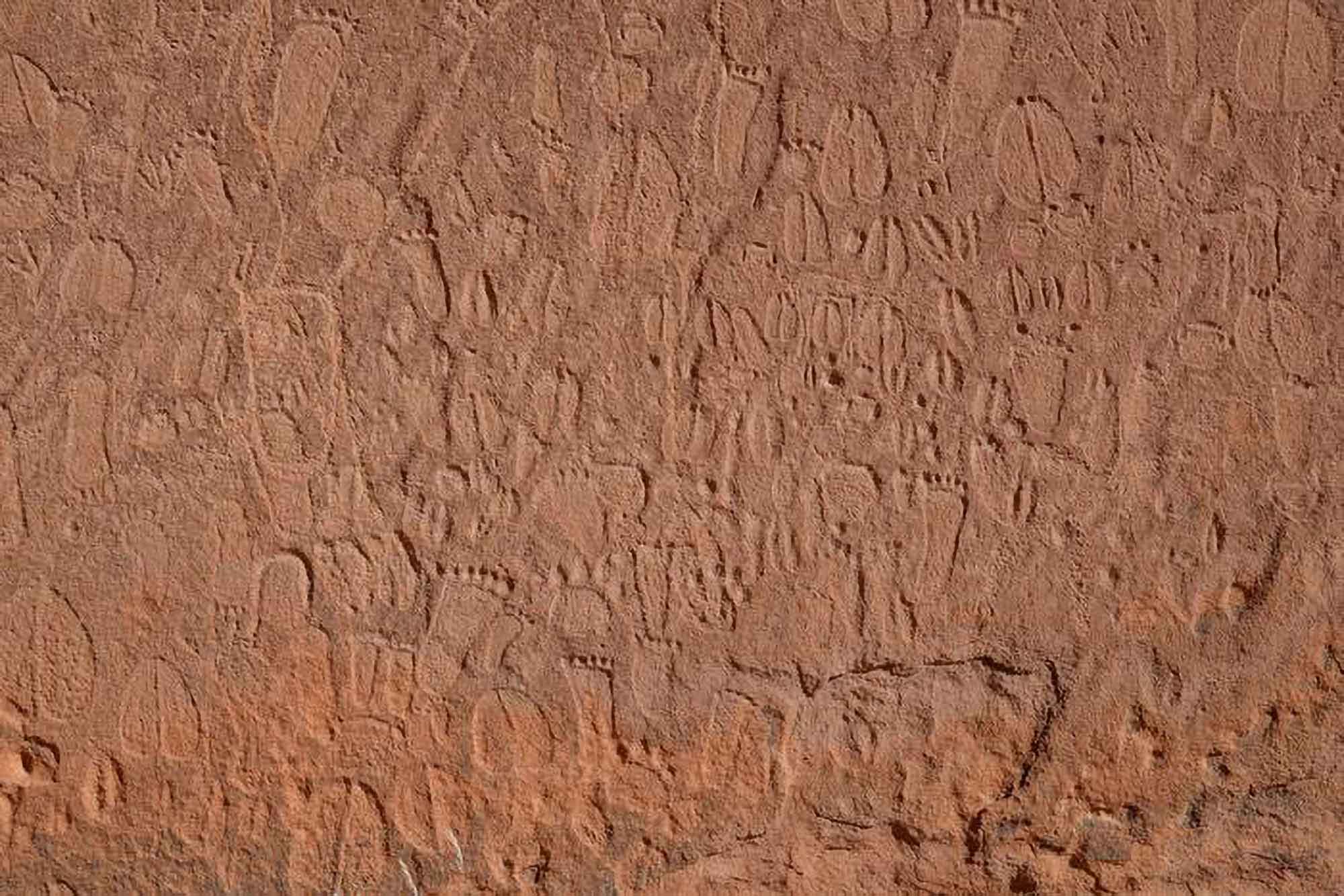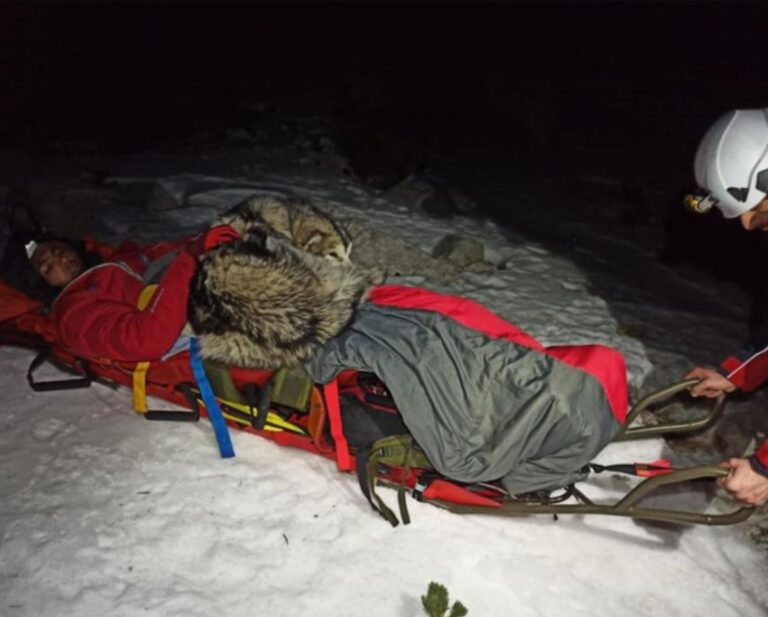Archaeologists examining prehistoric artwork of footprints up to 50,000 years old in southwest Africa have been able to determine the type of animals and even their likely ages by cooperating with native experts for the first time.
Researchers from Germany’s Cologne University and Erlangen-Nuremberg University cooperated with animal tracking experts from the Nyae Nyae Conservancy in Tsumkwe, Namibia, to investigate the animal tracks that had been engraved on six rock faces in the Later Stone Age in more detail.
And the scientists were baffled about being able to identify detailed information on the species such as age, sex and the direction of the tracks.
In a statement from 14th September obtained by Newsflash, Dr Andreas Pastoors from Erlangen-Nuremberg University’s Institute for Prehistory and Protohistory said: “In the
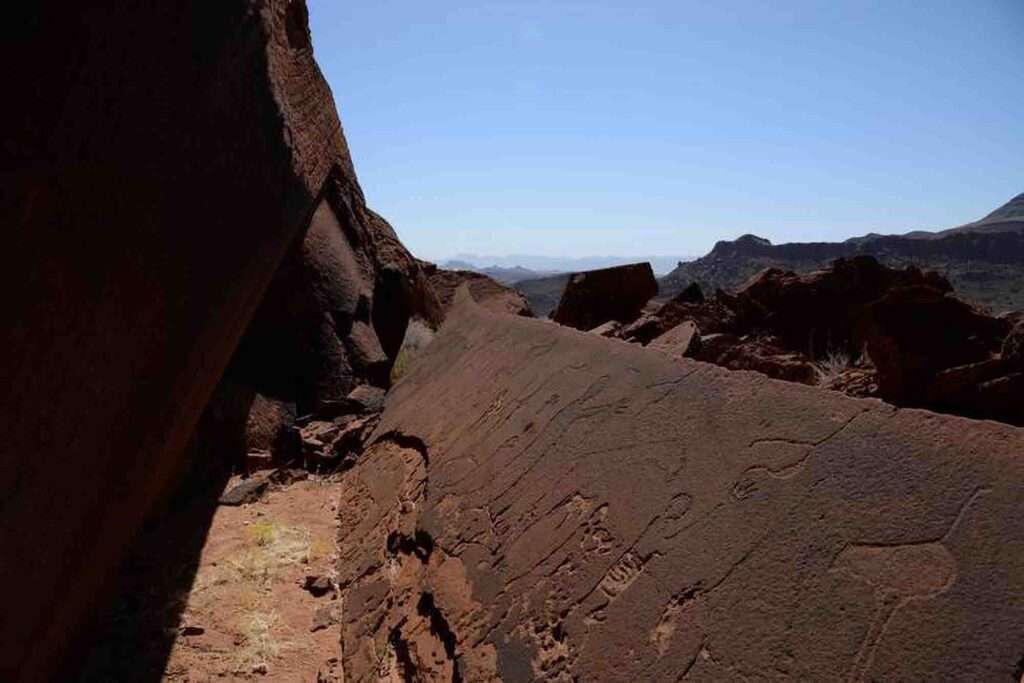
Doro Nawas mountains in the Namib desert in northwest Central Namibia, vegetation is sparse and trees and bushes generally only grow along small dry riverbeds.”
Dr Pastoors explained that the area had been a habitat for an unusually high number of different species such as giraffes, elephants, springboks, lions and leopards due to the existence of several permanent waterholes.
Currently uninhabited and not exploited by humans, ancient engravings as well as human footprints confirm that stone age hunters had lived here in the past.
Dr Pastoors added: “Until now, archaeologists have only been able to interpret the species of the animals depicted in the rock art. Animal tracks tended to be classified together with the abstract symbols.”
He explained: “Researchers have until now completely neglected the fact that traces and tracks are also a valuable source of information.”
His team of researchers has taken a new approach by merging Western archaeological science with indigenous knowledge.
Together with the Namibian tracking experts Tsamgao Ciqae, Ui Kxunta and Thui Thao, the European scientists investigated six rock faces depicting a particularly large number of human footprints and animal tracks.
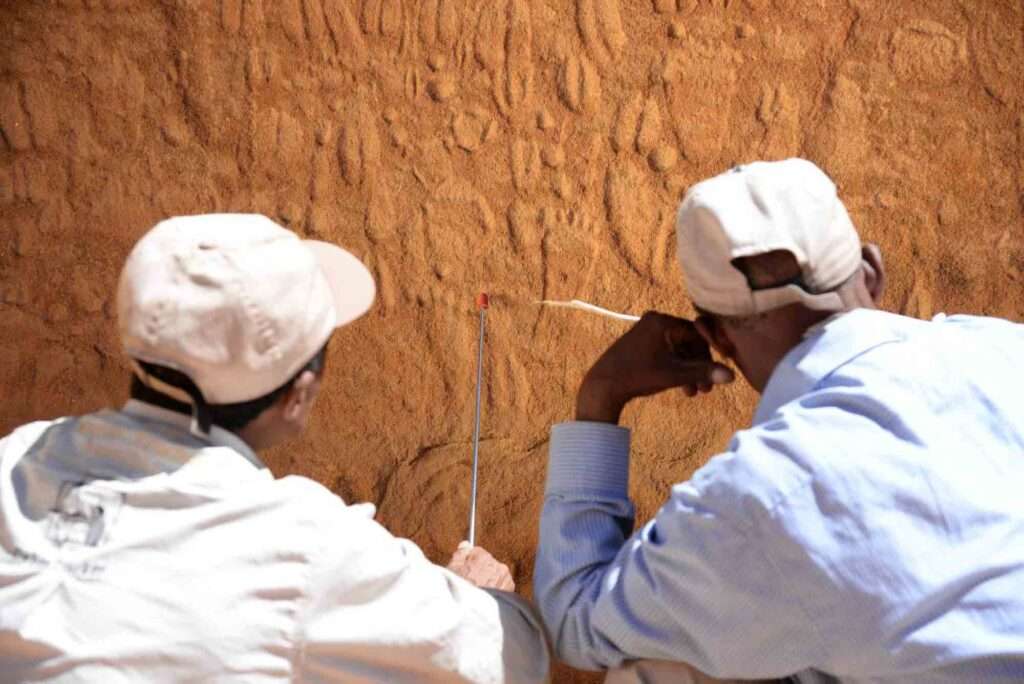
According to the scientists, Western researchers would be unable to recognise anything in these images as they lack the relevant expertise.
Dr Pastoors said: “For this reason, the tracks have not yet been assessed as a legible source of information.”
He explained that researchers had previously not realised the scientific value of the images.
But during the latest research endeavour, the local experts discovered surprising details.
In more than 90 per cent of the analysed 513 images, they were able to determine the species, age range, sex, specific limbs, side of the body and the direction of the animal tracks or human footprints.
Dr Pastoors emphasised: “Interestingly, the animal tracks indicated a larger variety of species than those in the pictures of animals illustrated in profile in rock art in neighbouring regions.”
He added: “The team of researchers was able to identify 20 further animal species in the animal tracks, ranging from bushpig, buffalo, monkey and caracal to various different types of antelopes to bird species such as red-crested korhaan and marabou.”
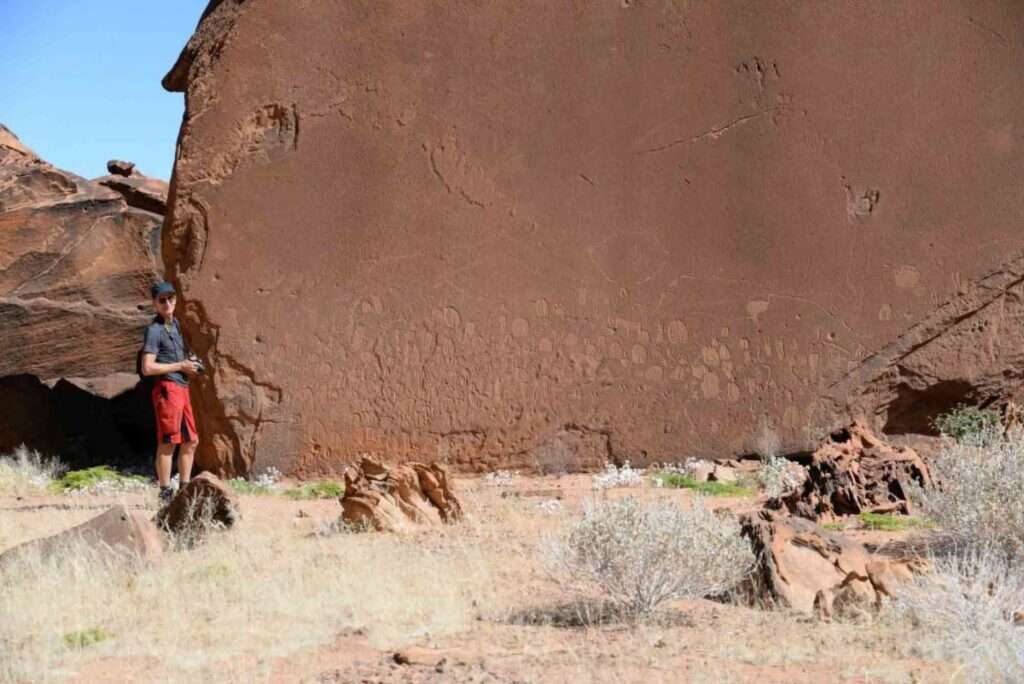
Dr Pastoors concluded: “The study is a further confirmation of the fact that indigenous knowledge with its extensive insights in a number of different subject areas has a valuable contribution to make towards driving archaeological research forward.”
Namibia is rich in hunter-gatherer rock art from the Later Stone Age, a period in African prehistory that follows the Middle Stone Age.
The transition from the Middle Stone Age to the Late Stone Age is thought to have occurred between 50,000 and 39,000 years ago.
To find out more about the author, editor or agency that supplied this story – please click below.
Story By: Thomas Hochwarter, Sub-Editor: Joe Golder, Agency: Newsflash
The Ananova page is created by and dedicated to professional, independent freelance journalists. It is a place for us to showcase our work. When our news is sold to our media partners, we will include the link here.

